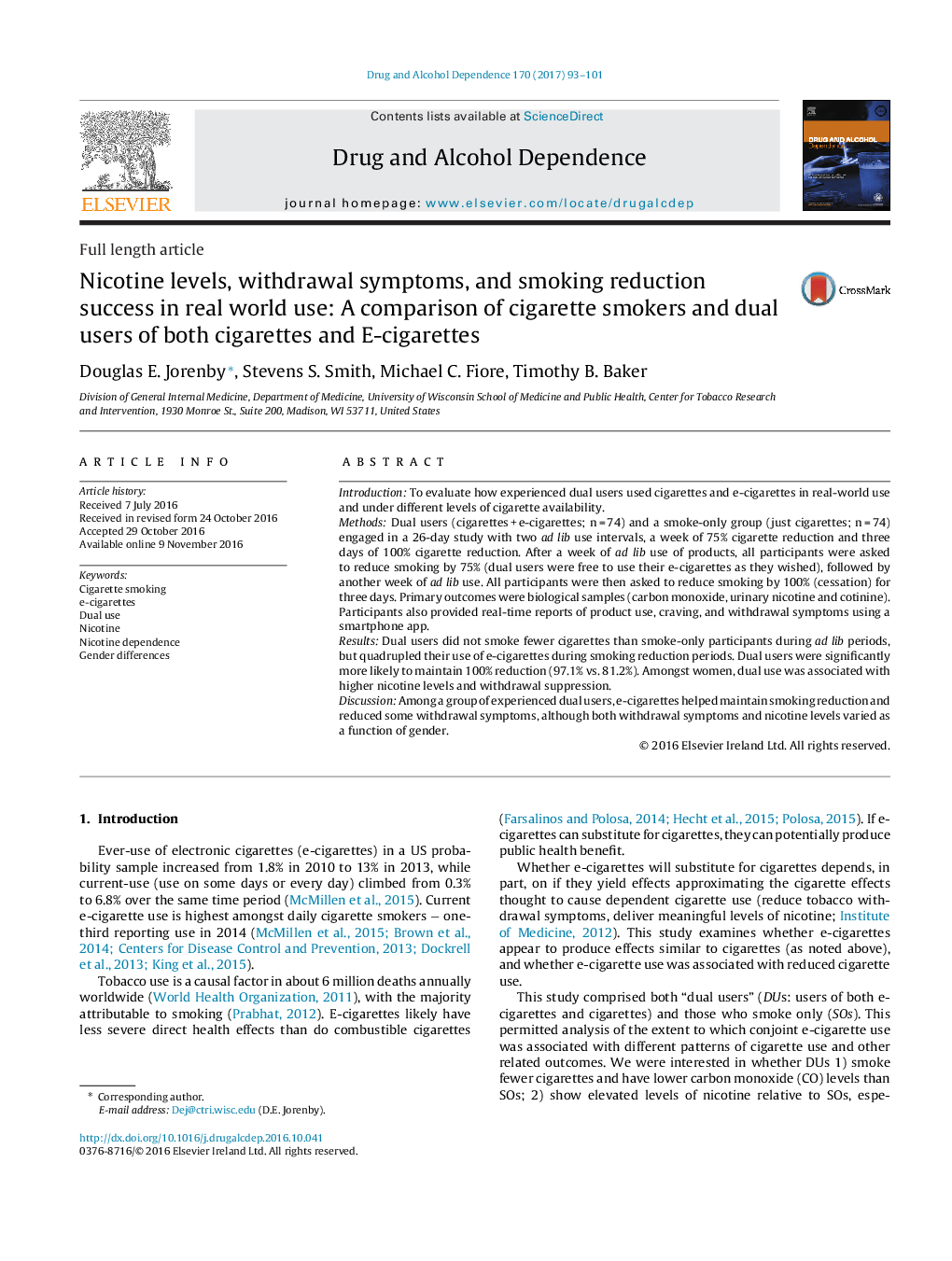| Article ID | Journal | Published Year | Pages | File Type |
|---|---|---|---|---|
| 5120301 | Drug and Alcohol Dependence | 2017 | 9 Pages |
â¢Real world dual users were better able to maintain abstinence from cigarettes.â¢Women dual users had higher nicotine levels/reduced craving during smoking reduction.â¢Dual users were less motivated to quit smoking in the coming year than smokers.â¢Dual users did not have lower levels of carbon monoxide during ad lib use.
IntroductionTo evaluate how experienced dual users used cigarettes and e-cigarettes in real-world use and under different levels of cigarette availability.MethodsDual users (cigarettes + e-cigarettes; n = 74) and a smoke-only group (just cigarettes; n = 74) engaged in a 26-day study with two ad lib use intervals, a week of 75% cigarette reduction and three days of 100% cigarette reduction. After a week of ad lib use of products, all participants were asked to reduce smoking by 75% (dual users were free to use their e-cigarettes as they wished), followed by another week of ad lib use. All participants were then asked to reduce smoking by 100% (cessation) for three days. Primary outcomes were biological samples (carbon monoxide, urinary nicotine and cotinine). Participants also provided real-time reports of product use, craving, and withdrawal symptoms using a smartphone app.ResultsDual users did not smoke fewer cigarettes than smoke-only participants during ad lib periods, but quadrupled their use of e-cigarettes during smoking reduction periods. Dual users were significantly more likely to maintain 100% reduction (97.1% vs. 81.2%). Amongst women, dual use was associated with higher nicotine levels and withdrawal suppression.DiscussionAmong a group of experienced dual users, e-cigarettes helped maintain smoking reduction and reduced some withdrawal symptoms, although both withdrawal symptoms and nicotine levels varied as a function of gender.
